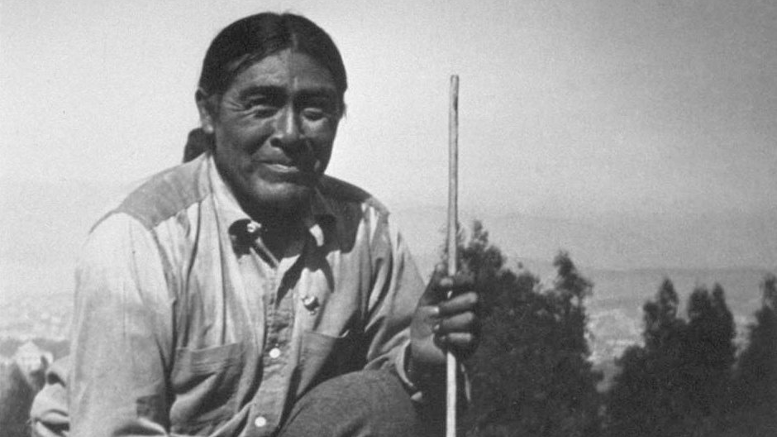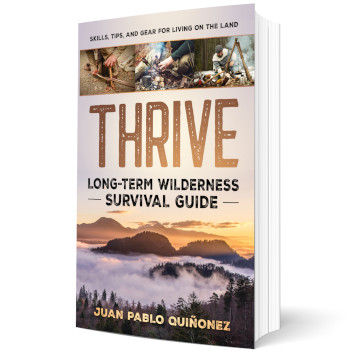Ishi lived alone for three years hunting and gathering food near the foothills of Mt Shasta in California from November 1908 to August 1911. This article is about how he managed to survive alone and in hiding for such a long period of time. It is based on the records and evidence that has been gathered since then. My main reference is the book Ishi in two worlds; it is regarded to be the most complete biography of Ishi.
The Yana peoples
Ishi was the last Yahi. The Yahi people had a dialect with the same name and were a subgroup of the Yana tribe. They inhabited the foothills 40 miles southwest of Mt. Lassen in California. The Yana were courageous fighters accustomed to a tough life; they resisted the invasion of their territory until they were exterminated by colonizers. The village of the last four survivors was discovered by accident in November 10, 1908 by a surveyor crew. The last four Yahi had lived in hiding in a small fraction of their traditional lands for years. The reduction in their numbers and territory made it very hard for them to live in an originally unaccommodating land. They would occasionally steal food from nearby settlers, but greatly decreased their raids in their latest years due to their vulnerability.
What motivated him?
When their village was discovered Ishi was around 50 years old and lived with his uncle, mother, and sister. The surveyors that discovered their village found only Ishi’s mother in it, the others were away at the time. They stole their acorn and dried salmon baskets. They took the hand drill that they used to light fires as well as their cooking utensils. They also stole their arrow making tools, a deer snare, bow, arrows, quivers, a two pronged spear, baskets, moccasins, tanned hides, and wildcat pelts.
After their village was raided, the family split. Ishi and his mother went one way, and Ishi’s uncle and sister went the other way. Ishi’s mother died shortly afterwards, and Ishi never saw her sister or uncle again. Ishi wanted to avoid being killed by the colonizers so he lived furtively, leaving no trace of his existence.
How did he remain hidden?
One of the reasons Ishi’s endeavor is so incredible is that he had not only to survive for three years alone in a territory encroached by the murderers of his tribe, but he had to do it while remaining unnoticed. The last Yahi people had to live like ghosts. They lived in a small village that had been a bear’s den. They had chosen the ledge of Deer Creek canyon for its concealment and because they could travel to the creek through a trail screened by trees. They didn’t clear a single tree at the village to use them as camouflage and only some of the shrubs were cleared. Their location was concealed from sight and only Yahi people had been there.
They erased their footprints, or walked on rocks to avoid leaving a trace. Their fire was small so that the smoke dissipated through the vegetation. They used trails sparingly and crawled underneath heavy chaparral so that their trails would resemble runways of small animals. They never chopped wood, for that would announce their presence. Instead, they used fire or stone tools to charr and saw if necessary. Their methods of food procurement had to be silent like the bow and the snare.
Throughout all the years that Ishi lived concealed with his tribe, he practised the difficult lifestyle that he would eventually experience alone. He left the village after the dispersal of the last four Yahi. And he continued to live in permanent evasion for three years. Living alone and in concealment must have been extremely difficult, testing the limits of human endurance, skill, strength, and resourcefulness.
What did he eat?
The inland peoples of California relied mainly on acorn flour for sustenance. Salmon was their second most important food staple. Big mammals were tertiary sources of food, along with ducks and geese. They also gathered pine nuts, hazelnuts, buckeye, manzanita berries, wild raspberry, huckleberry, plum, grape, elderberries, barberries, and thimbleberries. Seeds, roots, and insects also enhanced their diet. Ultimately, they were acorn and salmon people.
While in concealment Ishi gathered acorns in autumn to make mush or bread with acorn flour throughout the year. He fished salmon with a double-pronged thrusting harpoon. He used a hair snare and hooks to catch trout and small fish. Although he knew how to fish using poison, a weir, a seine, and a net, he preferred no to use those methods because they left visible evidence.
He hunted with his mountain juniper bow and arrows. He would shoot at close range, usually five to forty yards. He lured his prey using the calls of various animals from a big repertoire of sounds. For instance, he would cry like an injured rabbit to attract another rabbit close by or one of their predators or imitate a faun to attract a doe. Instead of stalking or rambling he would lure and then ambush his prey. He usually shot from a crouching position, behind cover. This hunting method is suitable for a lone bow hunter, and minimizes unnecessary energy expenditure.
One of the items that the surveyors took from Ishi’s village was a deer snare. He probably set many snares and primitive traps to catch big and small animals. Edible plants would have complemented his diet, but there is no doubt that his three main sources of energy in order of importance were acorn, salmon, and big game.
How could he do it?
When Ishi left his village, most of his primitive equipment had been stolen. He was alone after his mother died. He had to live in concealment and in a territory that was reduced and not as abundant as the neighbouring valleys. How did he manage to survive for that long and in those conditions?
In my post How to Plan for Long Term Wilderness Survival I emphasize that a location that has abundant food sources is the most important condition needed for long term wilderness survival. Proper preparation and equipment along with the knowledge, skills and experience are also of utmost importance. In addition, a plan inspired in the ways the local indigenous peoples procured food is the way to go.
Ishi perfectly fulfilled those conditions. He lived in a place where acorn, salmon, and game had sustained his tribe for thousands of years. He had five decades of experience living in that location and he knew the land like no one else did. He knew exactly where specific food sources were and when to harvest them for maximum return. His life in concealment with four and later three other members of his tribe had served as preparation for his time alone.
He lacked the equipment at first but he knew exactly what tools he needed to survive and he knew how to make them out of the local materials. He was the recipient of knowledge and skills passed generation to generation for thousands of years. All this coupled with a lifetime of experience living as a hunter gatherer in his traditional territory enabled him to succeed in such a difficult feat.
Ultimately, he couldn’t continue living alone and in a territory that was being increasingly encroached. He resisted until he was forced to seek refuge with the same people that had murdered his entire tribe. The three years he lived alone and in mourning must have been incredibly harsh for him, to the point were he was forced to consider going to a strange and unknown civilization.
He was an ultimate survivalist; and he gives us a hint to the difficulty of the task, and the degree of knowledge, skills, and experience needed to succeed in long term wilderness survival, solo or in a small team.


